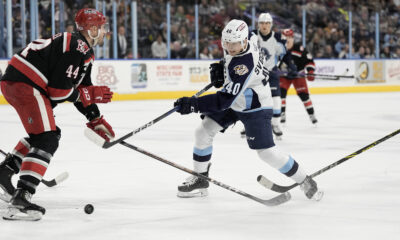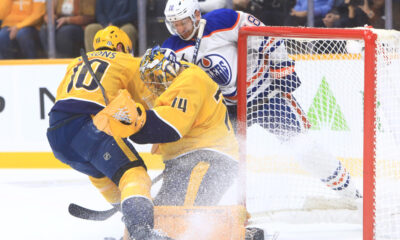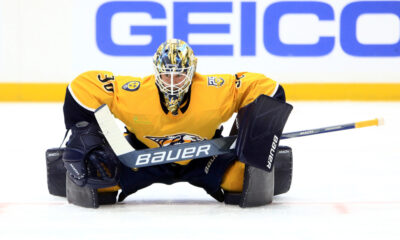Now that about a week has passed since the Nashville Predators were bounced in the second round of the Stanley Cup Playoffs, it’s time to start scrutinizing their playoff run and break down exactly whey they couldn’t advance past the San Jose Sharks. There are a number of different reasons that can be singled out, but one that was blatant was the ineptitude of Nashville’s special teams.
Effective special teams cannot win championships alone, as the cliché about defense goes, but ineffective special teams can lose championships. That’s exactly what happened to the Predators in these playoffs. Nashville had the worst power play percentage amongst teams that advanced to the second round, only converting on 4 of their 46 power play chances. That’s just 8.7%, which is brutal considering their opponents, the Anaheim Ducks and Sharks, had power play percentages of 16% and 28.9%, respectively. The Predators still played well outside of their power play, but having an effective man-up attack would have certainly helped them, especially against the Sharks. A few power play goals on the road would have certainly made those games closer, and maybe swung one or two to Nashville.
A huge indicator of how poor the Predators performed on the power play was their low high-danger scoring chances for. According to war-on-ice.com, the Predators had just 18 high-danger scoring chances for in the playoffs on their 46 power play attempts. That puts them second-to-last amongst teams that made it to the second round (only the Tampa Bay Lightning were worse). This also explains why the Predators were so bad on the power play despite having the most shots on goal on the power play amongst all playoff teams with 75. Most of those shots came from the outside as Nashville failed to establish an effective power play attack.
Another interesting thing about the Predators power play in these playoffs is that it was equally bad at home and on the road. The Predators went 3-5 on the road in their two series, yet had half of their four playoff power play goals on the road. They also had nearly half of their 18 high-danger chances on the road with 8. So, the Predators’ weak power play cannot be blamed on the venue. It was equally bad across the board.
As for the penalty kill, the Predators were better, but not much better. They had the second-worst PK% amongst second-round teams at 73.9%, only better than the Dallas Stars. They also allowed 12 power play goals, more than any other playoff team. That penalty kill percentage was not going to cut it against a Sharks power play that was relentless all season, and was second amongst all playoff teams in PP%. It was a recipe for disaster.
Digging deeper into the analytics, it’s clear that the Predators’ PK issues came about because they could not prevent opposing players from getting to high-danger areas. Nashville gave up the most high-dangers scoring chances against while shorthanded amongst all 2016 playoffs team with 23. Throughout the series against the Sharks, players like Logan Couture and Joe Pavelski found ways to find the puck in high percentage areas and find the back of the net. Often the slot in front of goaltender Pekka Rinne was wide open and San Jose’s snipers were allowed open season on net.
The Predators couldn’t have won the series against the Sharks by simply improving their special teams. They got blitzed at even strength on the road as well, but that’s a conversation for another day. But, if the Predators had improved on special teams, they could have had a much better chance to best the Sharks in their second-round series.
They didn’t have to be perfect, but 4 for 46 certainly wasn’t going to cut it.
Photo credit: Christina McCullough
















